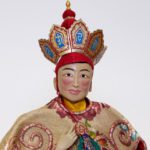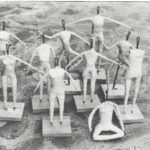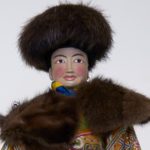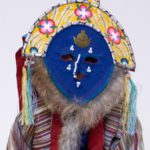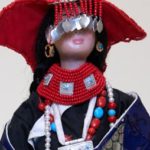Monastic and Religious Figures
The traditional robes of Tibetan Buddhist monks can be traced back to the historical Buddha who, over 2,500 years ago, wore a humble robe made from discarded patches of cloth. Overtime, the simplicity of his robe became a symbol of a monk’s vow to live a simple life, his connection to the Buddha, and his willingness to follow the Buddha’s example.
The traditional robe has 3 parts:
(1) the dhonka,a wrap shirt with cap sleeves, usually maroon in color;
(2) the shemdap, a maroon skirt, made from patches of cloth and a drape that is almost two and a half times the monk’s height;
(3) the zhen, a maroon “everyday” shawl, sewn from three pieces of cloth, or folded cloth squares made to look like patchwork.
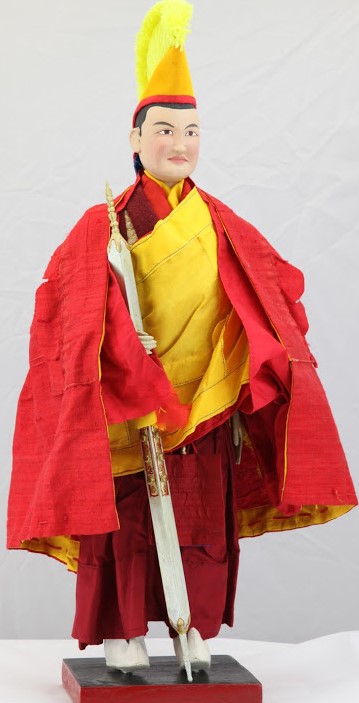
When praying, monks wear a red woolen cloak, called a dagang, over the other robes. And, for certain Buddhist ceremonies and teachings, they wear a yellow wrap, or chogu, rather than the zhen.
In early times, the maroon and yellow colors of the traditional robes originated from dyes made from the most common natural plant materials available—typically tree root extract, tubers, bark, leaves, flowers, and spices, like saffron and turmeric.
A variety of daily and ceremonial hats are also an important part of a monk’s traditional garments, with distinctive styles that readily identify the monk’s sect and position. For example, when conducting Buddhist ceremonies, monks of the Gelugpa sect (Tibet’s dominant sect since the 17th century) wear a zixia,or yellow crescent-shaped hat, topped with a greenish-yellow fringe, somewhat resembling the comb of a rooster.
Today, the centuries-old monastic garments endure as a significant part of Tibet’s cultural heritage.



